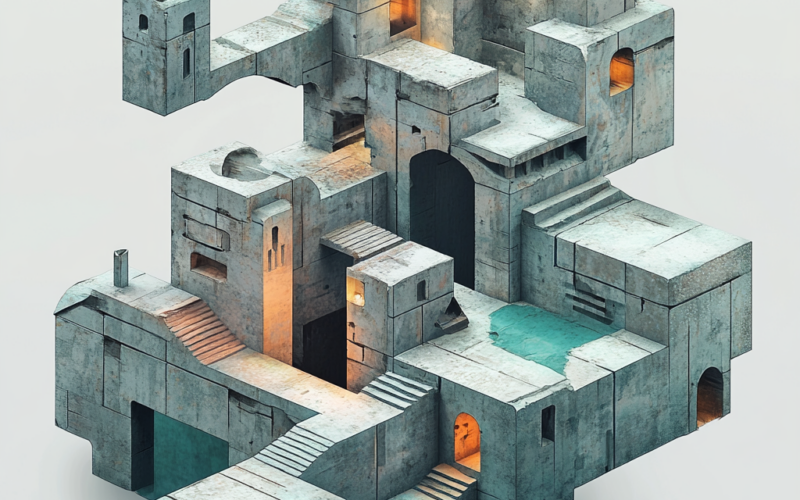Basics of Visual Hierarchy in Game Design
Visual hierarchy in game design is a key element to creating a clear and effective level structure. With the help of the correct distribution of visual accents, you can direct the player’s attention to important elements of the game. The main goal is for the player to intuitively understand where key objects are and how to move through the game world. Elements such as size, shape and position of objects play an important role in creating this hierarchy.
Using a visual hierarchy helps not only with navigation, but also with creating an emotional response in the player. For example, large and bright elements attract attention, creating a feeling of importance or threat. Smaller and less visible objects can be used for lower priority tasks. It is important that these accents support the overall concept of the game and create a harmonious experience.
The role of color and contrast in structuring levels
Color and contrast play an important role in highlighting key elements in a level. Using bright colors for important objects helps direct the player’s eye toward objectives or dangers. The contrast between the background and objects helps improve the visibility and distinguishability of elements, which is especially important in fast-moving scenes. For example, bright red objects may indicate threat, while green or blue hues may be associated with safe or positive elements.
Contrast can also be used to create accents in a space. Against a background of solid or neutral colors, objects with bright contrast attract attention, which makes it easier for the player to navigate the game. It’s important to consider that too much use of bright colors or contrast can be overwhelming, so balance is key.
Using space and composition to enhance perception
Space and composition are two of the most important aspects that directly affect the player’s experience of a level. Spatial organization helps players navigate the game world by making its structure clear. The location of objects, paths and interaction areas should be distributed in such a way that the player can easily understand where he is and where he needs to go.
In addition, proper composition helps create visual harmony and avoid overload. Too many objects on the screen can make it difficult to see, while empty space can create a feeling of discomfort. Elements such as paths, walls, foreground and background objects should work in harmony to direct the player’s eye to main targets or important elements.
Fonts and text elements as a tool for highlighting information
Fonts and text elements play an important role in structuring information in the game. They can be used to highlight tooltips, set objectives, display important information, and give hints to the player. The font size, style and color should match the importance of the message. For example, large, bold fonts can be used to show the main message, while smaller fonts are suitable for minor details.
Text elements can also be used to create atmosphere and convey mood. In games where story is important, fonts can vary depending on what emotion or idea needs to be conveyed. For example, in horror games, fonts may be distorted or unstable to create a sense of unease in the player. It is important that the text is easy to read and does not overload the player’s perception.
Interactive Elements: How to Create Clear Navigation
Interactive elements play an important role in organizing navigation through game levels. These could be buttons, prompts, animations, or other elements that signal the player how to interact with the world around them. Well-designed interactive elements help the player understand where they can interact with objects, as well as what they need to do to progress through the game.
An important part of the design of such elements is their visual connection with the main objects in the level. For example, buttons or levers can be highlighted with bright colors or animations to help the player understand that they are interactive elements. It is also worth considering that interaction with these elements should be
Examples of successful visual structures in popular games
The visual structure of game levels significantly influences player perception and behavior. Well-designed levels can help the player navigate intuitively, creating a feeling of smooth and interesting gameplay. Let’s look at some successful examples where visual structure helps create a unique experience:
- Games with clear and understandable levels: Some games, such as platformers, create levels in such a way that the player immediately understands which direction he needs to go. Each element in the level, be it doors, stairs, or collectibles, is placed in such a way that they attract attention and prompt the player’s actions.
- Using Color to Create Atmosphere: Adventure or horror games often use color to create atmosphere and highlight key elements. For example, bright colors can indicate danger or important objects, while dull shades create the desired atmosphere of tension.
- Emphasis on Key Elements: In games where the player must explore levels, emphasizing key objects and places that are important to explore helps improve the experience. Bright colors or noticeable shapes of objects attract the player’s attention and help him stay on track.
- Logic of interaction with the level: In many games, the emphasis is placed so that the player himself can easily understand how and in what order to interact with the elements of the level. This improves the gaming experience and promotes natural progression.
- Interface and Navigation Assistance: Some games use an interface and navigational aids to help players navigate the level. Cleverly integrated indicators, arrows and text prompts do not distract, but help you find the right objects and goals.
A successful level visual structure helps players navigate the game more easily and move towards the goal, and also contributes to the creation of an enjoyable gaming experience where each element has its own role and meaning.
Questions and answers
Answer 1: Visual hierarchy helps highlight key elements of a level, directing the player’s attention to important objects and goals.
Answer 2: Color and contrast help highlight important elements, creating emphasis on desired objects and improving the visibility of elements.
Answer 3: Spatial organization and composition help improve orientation at a level, making its structure clearer and more harmonious.
Answer 4: Fonts and text elements can highlight important information and tasks, as well as convey the atmosphere of the game.
Answer 5: Interactive elements help players intuitively understand how to interact with objects and move through the game.

